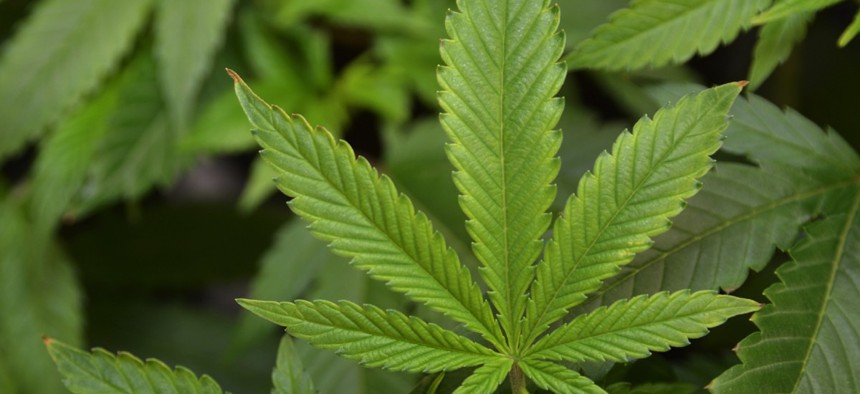The Complex Realities of Medical Marijuana Legalization in Ohio


Connecting state and local government leaders
Without the infrastructure to grow, test, process or dispense medical marijuana, it could take up to two years for patients to be able to use it legally.
Medical marijuana became legal in Ohio on Sept. 8, but there remains no legal ways to obtain or use medical marijuana in the state.
There are no licensed marijuana growers, and as a result there are no marijuana crops. There are also no testing labs, no processors, and no dispensaries. And even if these things existed, there are no physicians certified by the state to provide medical marijuana recommendations to qualifying patients.
Moreover, because Ohio has not entered into reciprocity agreements with any other states the state does not recognize medical marijuana registry cards issued elsewhere. And even if a qualifying patient had a physician’s note and obtained marijuana in a neighboring state, products can’t be transferred across state lines without violating federal law.
So, while medical marijuana has become legal in the Buckeye State for those with one or more of the 20 qualifying conditions, it could take up to two years before patients are able to legally use it.
Ohio Attorney General spokesperson Dan Tierney noted in an interview earlier this month that the state’s General Assembly put into place a fairly strict law. It does not allow medical marijuana to be smoked and it does not allow edibles.
Ohio’s law, Tierney said, “envisioned a truly medical product,” keeping most forms of ingesting recreational marijuana illegal, though vaping does seem to be allowable under Ohio’s Medical Marijuana Control Program.
While the program went into effect Sept. 8, Tierney said, it also included a significant two-year lead time for the program to actually become operational.
“The law had to become effective at some point,” said Tierney. “If somebody expected they’d be able to take advantage of this interim period before the program is put in place, there are a lot of difficulties to being able to do so.”
Currently, three separate state agencies including the Ohio Department of Commerce, the Ohio Board of Pharmacy and the Medical Board of Ohio are developing the plans to set up the program.
Kerry Francis, communications director for the ODC, said that the administrative rules that will govern medicinal marijuana cultivators, processors and testing labs are currently in the process of being written.
“The rules for cultivators will be adopted in May 2017,” Francis said, “and the rules for testing labs and processors will be adopted in September 2017.”
The board of pharmacy will be in charge of licensure and oversight of the dispensaries once the rules are developed.
Those rules will establish standards—said OBP Director of Policy and Communications Cameron McNamee—including application procedures, fees, number of available licenses, timing, how to apply and renewal requirements.
The state commerce department and board of pharmacy are required by law to take all actions necessary to ensure that Ohio’s Medical Marijuana Control Program is fully operational no later than September 2018.
“At that time, there will be an established structure for Ohioans with a qualifying medical condition to obtain a recommendation for medical marijuana, purchase medical marijuana from a licensed dispensary, and consume medical marijuana,” said McMamaee.
Medical Board of Ohio spokesperson Tessie Pollack said a physician is not permitted to issue a state of Ohio-approved recommendation to use medical marijuana until the physician has obtained a certificate to recommend from the state medical board.
The rules outlining the standards and process needed to obtain such a certificate will be developed no later than Sept. 8, 2017, Pollack said.
However, as a way to protect patients who seek to use marijuana prior to the creation and implementation of all the administrative rules necessary to run the program, the law created an affirmative defense for certain marijuana-related crimes.
“According to the law, a patient, parent, or guardian can only raise an affirmative defense if they have, among other requirements, received a written recommendation from his or her doctor that certifies a certain number of criteria are met,” said Pollack. “The Board recommends that physicians consult with their private legal counsel and/or employer for interpretation of the legislation.”
Pollack acknowledges that, a result of the requirements of the affirmative defense, physicians will face potentially challenging inquiries from patients during the time period between the effective date of the statute and the date when the certificate to recommend process is fully operational.
Ohio Attorney General Senior Policy Advisory Ryan M. Stubenrauch also recognizes this challenge.
“Even assuming that you could find a doctor to do that, the question would be, how do you legally obtain marijuana. There’s a defense for having it but there’s not a defense for trafficking it,” he said.
The state of Michigan has a reciprocity agreement for out-of-state ID holders. So in theory a qualifying Ohioan—if she is able to obtain a note from a physician willing to write one before officially being certified by the state to do so—may be able to travel to Michigan and use medicinal marijuana there, but she would not be able to bring the product back to Ohio.
Regarding reciprocity with other states, Pollack said Ohio’s law requires that the Board of Pharmacy attempt to negotiate these agreements but before they can, they must meet two sets of criteria.
The first, she said, is that the eligibility requirements imposed by the other state in order to obtain a registry identification card are substantially comparable to Ohio’s requirements. The second, Pollack said, is that the other state recognizes a patient or caregiver registration and identification card issued in Ohio.
David DeWitt is a journalist based in Athens, Ohio, and is the Associate Editor for The Athens News. He previously worked at National Journal’s Hotline and The New York Observer’s Politicker.com.

NEXT STORY: Hurricane Matthew Recovery Continues in Hard Hit Eastern North Carolina




